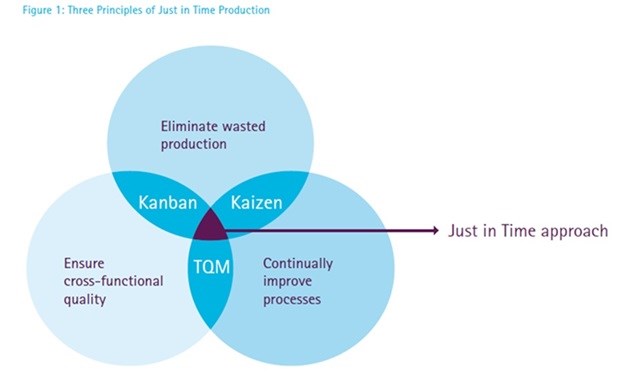
Subscribe & Follow
Jobs
- Advertising Sales Executive Sandton
- Influencer Campaign Manager Cape Town
- Digital Marketing Internship - Paid Position Centurion
- Chief Marketing Officer Cape Town
- Sales, Marketing and Financial Advisory Durban
- Paid Media Specialist Cape Town
- Marketing Coordinator Cape Town
- Senior Marketing Account Manager Cape Town
- Digital Marketing Manager Cape Town
- Marketing Assistant Johannesburg
New approach arrives Just-in-time to help marketers maximise influence

Achieving this goal in the modern era, requires a change in the approach of marketers to put themselves in a position to convert one-time consumers into loyal customers. This approach is called Just-in-time marketing.
Traditionally, marketing efforts are geared towards boosting the awareness of prospective consumers around a product or service and highlighting the competitive advantage of said offering over that of competitors through the appropriate touch point and at the point at which the purchasing decision is made.
While this approach bore much fruit in the golden era of mass communication, the return on investment in the digital era has not lived up to expectations. This is attributed to the breadth of channels available to connect with consumers. The path to purchase has also been split up in multiple routes. Consumers no longer merely waltz into a store and ask the sales staff what the best product is for their needs and budget. Instead, they research it online, read reviews, compare prices and feature sets, read user comments in online forums, watch unboxing and first impression videos on YouTube and ask subject matter experts over social networks for their opinions.
Relying on traditional marketing channels by using a spray-and-pray approach will not put companies in the driving seat when it comes to achieving their marketing and sales goals. The point of influence for consumers is no longer at the point of sale, it is at the point of evaluation – when the consumer is considering all of the contending offerings.
Waste not, want not
We call this wasted effort ‘marketing inventory’ because like physical inventory within factories, it equates to the accumulation of unused parts or unsold goods that result from overproduction.
Today, companies are producing more marketing inventory than ever, to the detriment of their profit margins. To solve their inventory crisis, marketers should apply the same just-in-time logic that revolutionised the factory, when excess inventory threatened to sink manufacturing.
For instance, Toyota in post-war Japan radically trimmed its inventory by adopting a Just-in-time approach. This saw the company producing only enough product to meet customer demands at the right time, to the exact specifications and quality that the customer requires.
Marketers can adopt the same approach to solve their own inventory problem by producing only the marketing that’s required, at the time that it’s needed, with the exact message or offer that will convert a sale and help convert consumers into loyal customers.
Three routes, one destination
Factories used three related Just-in-time methods, namely Kanban, Kaizen, and Total Quality Management, with each of which holding a lesson for how marketers can stem the tide of marketing inventory.
- • Kanban are a set of procedures used on Just-in-time factory floors. These procedures keep production calibrated at every stage to consumer demand, helping to ensure that very little effort is ever wasted. When applied to marketing, Kanban sees marketing professionals focusing their efforts on consumers who are most likely to purchase. Marketers concentrate on consumers who already know and use a product as opposed to pushing an overabundance of awareness among many who may not find alignment between the offering and their needs. Creatives and programmers for example, can opt to use Kanban to win more customers for the business, as they are tasked with designing messages and experiences that effectively pull customers to the brand messaging.
• Kaizen is a state of mind and involves every employee at the company. Everyone continuously seek to improve processes and practices with the aim of eliminating waste and enhancing quality. Marketing departments should employ the same ideology and aim to improve their customer interactions every single day, at all levels of their marketing organisation. For instance, data scientists can easily apply it to their roles since they design platforms for real-time analytics and improved promotional targeting.
• Last but not least, there is Total Quality Management (TQM) which Accenture views as a firm-wide commitment to ensuring that no manufacturing defects make it through to the next stage of production or to the end-user (customer). When applied to marketing, TQM means that every customer interaction - whether taking place in the marketing, sales or service functions - achieves the best customer outcome. Quality assurance specialists can adopt TQM since they are charged with ensuring the consistency of customer interactions across marketing, sales and service functions.In the end, companies that have been able to dramatically reduce their marketing inventory are finding themselves more nimble than their competitors. These businesses are able to change their marketing approach quickly instead of cautiously weighing the costs associated with ditching a long-term plan.
This provides them with the opportunity to focus on their individual customers and how preferences are constantly changing, which channels consumers now prefer, and how best to engage them today on those channels, enabling them to achieve success more easily within the digital era.


















